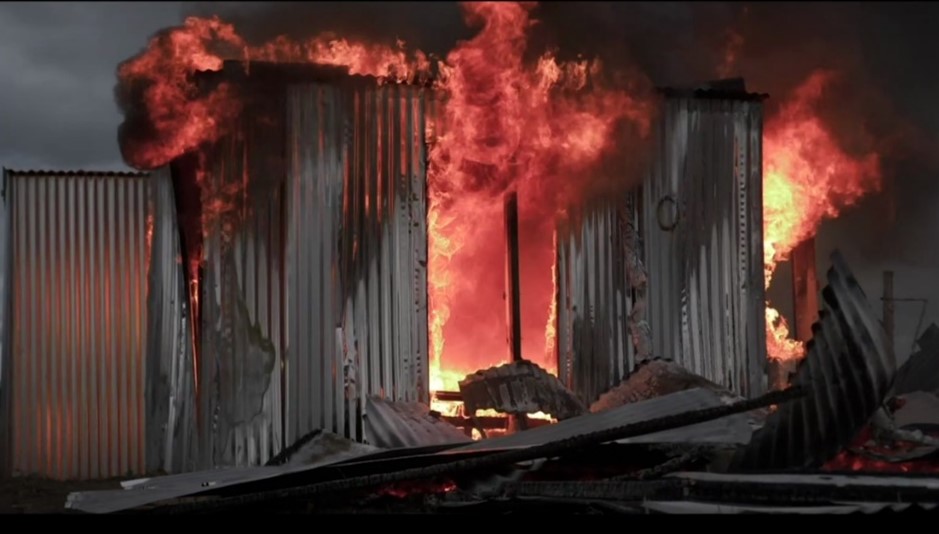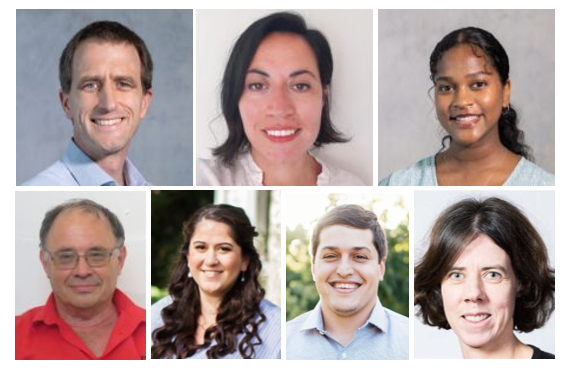Launch of online/hybrid masters degree in fire engineering at Stellenbosch University
By: Prof Richard Walls and Dr Natalia Flores Quiroz,
Stellenbosch University, South Africa, rwalls@sun.ac.za
Introduction
Universities in places such as the USA, Europe, New Zealand and Japan have a proud history of producing fire safety engineering graduates that have been making the world a safer place. South Africa, and most of the developing world, have been lagging behind in training fire specialists. However, exciting developments at Stellenbosch University are helping to propel fire safety forward. This article outlines the new fire engineering educational offerings available, after first explaining the profession and the need for educational competency. More information can be found at fire.sun.ac.za.
Fire safety/protection engineering skills
As a quick introduction (in case you have stumbled on this article and are not a fire engineer), the SFPE explains that the role of fire engineering professionals is to:
… identify risks related to fire and determine ways to reduce the risks as well as design ways for safeguarding against the wrath of fire. Through the application of science and engineering principles, the engineer can mitigate, detect, control, or suppress a fire… This includes analyzing fire hazards, mitigating fire through design and construction of buildings, examination of building uses and industrial processes, and design, installation and maintenance of fire detection and suppression systems. (SFPE: What is FPE?)
Hence, fire engineers are competent engineering professionals who use calculation and design principles to develop safe infrastructure. The SFPE has produced a guideline on core competency requirements, with a graphical illustration shown in Figure 1. These core competencies have formed the basis for the development of taught content at Stellenbosch University which is discussed below.
The majority of engineering students do not cover the necessary prerequisite fire safety content in their undergraduate degrees. A mechanical engineer will typically have good thermodynamic knowledge, but may not understand combustion chemistry. A chemical engineer may have good combustion chemistry knowledge but will not know how to design a sprinkler system. A civil engineer may have covered pipe flows for sprinkler design, but would struggle to design a smoke extraction system. Electrical engineers can readily integrate detection and suppression systems into existing building control systems, but cannot necessarily design such fire safety systems. With the large holes in all undergraduate programs many fire engineers worldwide train through postgraduate courses and degree programs, relying on their undergraduate physics and maths knowledge, but expanding this into practical fields of the profession. Civil, mechanical, electrical, chemical and mechatronic engineers are, thus, found side-by-side at engineering consultancies and contractors around the world, with many needing further formal education. Also, most engineers only discover their passion for fire after entering the working world. Hence, undergraduate and even some full-time postgraduate degree programmes struggle to recruit enough students (there are very few 17-year-olds who will tell you they want to become a fire engineer). However, there has been a significant and growing demand for distance education to formally upskill engineers to be competent fire safety professionals.

Figure 1: Core competencies of fire engineers (Recreated from SFPE Core Competencies)
Fire engineering degree programs
To start providing the educational fire engineering foundation necessary for advancing the fire safety profession, Stellenbosch University has been growing a technical capacity in the field for the past 9 years. From February 2024 the following programs will be on offer:
1. Masters in Engineering (Structured/coursework) – Online/hybrid. Full-time or part-time. 2-3 years. Can be taken by industry professionals. The focus of this article.
2. Masters in Engineering (Research) – Full-time on campus. 2 years.
3. PhD – Part-time or full-time. 3 years.
4. Various short courses.
The structured Masters in Engineering degree, MEng(S), with a fire engineering focus will be launched in 2024. The aim of the degree is to make highly technical fire engineering education available to working professionals through offering it in a hybrid/online mode. Throughout the course of the degree students will only need to come to campus once for all fire engineering modules, and that will be to conduct fire experiments and practical sessions regarding fire safety systems. All exams, assessments and classes can be completed either face-to-face or online. This will help make educational material available to everyone from the mining engineer in Zambia, to the petrochemical engineer in Nigeria, to the consultant in Ireland.
The MEng(S) is a 180 credit degree on NQF Level 9 and consists of the following:
- 5 fire engineering modules: (1) Fire behaviour, (2) Fire engineering I, (3) Fire engineering II, (4) Techniques in fire engineering, and (5) Structural fire engineering (75 credits total)
- 3 elective modules out of: Data science, Project management, Advanced topics in engineering, Numerical methods, and Project economics & finance (45 credits total).
- A research thesis/project (60 credits)
Specific details of the fire engineering courses are provided in Table 1. An undergraduate engineering degree (BEng / BSc / BS) in civil, mechanical, electrical or chemical engineering is typically required for admission, although an ECSA-approved BTech with an average above 70% will be considered possibly subject to additional studies. (It is noted that in certain countries a BTech is equivalent to the SA BEng or USA BS degree, and this will be considered).
Table 1: Course content of fire engineering modules. Each module is 15 credits (150 hours of work).
|
Course:
|
Topics:
|
|
Fire Behaviour
|
Thermochemistry
|
|
Heat transfer
|
|
Fire plumes and smoke behaviour
|
|
Steady burning of liquids
|
|
Ignition and initiation of burning
|
|
Spread of flame
|
|
Pre- and post-flashover compartment
|
|
Fire Engineering I
|
Fire safety design
|
|
Fire detection and alarm systems
|
|
Smoke management
|
|
Evacuation and human movement principles
|
|
Fire Engineering II
|
Material and product behaviour in fire
|
|
Hazard and risk analysis
|
|
Suppression systems and design
|
|
Performance-based design
|
|
Techniques in Fire Engineering
|
Fire behaviour laboratory
|
|
Detection system laboratory
|
|
Suppression system laboratory
|
|
Zonal modelling
|
|
CFD modelling
|
|
Structural Fire Engineering
|
Fires and heat
|
|
Fire severity and fire resistance
|
|
Design of structures for fire
|
|
Steel, concrete and timber structures
|
|
General structures (composite, facades, etc.)
|
Research projects and theses can be conducted with in a variety of fields. The team is active in research in fields such as:
- Structural fire engineering (steel, 3D printed concrete and timber)
- Green energy (solar, green hydrogen)
- Wildland urban interface (WUI) fires
- Fire modelling
- Biomass based products (passive protection and construction systems)
- The reuse and processing of waste
- Bulk storage (agricultural, synthetic products, etc.)
- Forensics and post-fire analyses
- Materials testing
- Artificial intelligence in fire safety engineering
- Informal settlement and refugee camp fire safety
Experimental testing is an important component of research, with the fire engineering group having been involved in extensive laboratory work over the past years. Furthermore, the team partners extensively with Ignis Testing to allow students to have access to large-scale test facilities, cone calorimetry and similar setups. Figure 2 and Figure 3 show examples of past experimental work conducted.

Figure 2: Experimental testing is an important part of understanding fire behaviour. In this picture the fire resistance of firefighter clothing to high intensity radiation is being assessed.

Figure 3: Full-scale informal dwelling experiment. (Image: Justin Sullivan)
Who is involved?
The academic team at Stellenbosch University has grown rapidly since its inception in 2014, with the team being shown in Figure 4. Full-time team members are: Prof Richard Walls, Dr Natalia Flores-Quiroz and Mrs Courtney Devine. Adjunct staff members in industry include: Dr Antonio Cicione (CFS Consultants), Mr Dirk Streicher (Ignis Testing), Mrs Danielle Antonellis (Kindling) and Prof Lesley Gibson (Kindling). In addition, technical assistance and external quality control has been provided from industry specialists around the world.
For more information: fire.sun.ac.za

Figure 4: Fire engineering team members from top left – Full-time: Prof Richard Walls, Dr Natalia Flores Quiroz, Mrs Courtney Devine. Adjunct faculty: Mr Dirk Streicher, Mrs Danielle Antonellis, Dr Antonio Cicione and Prof Lesley Gibson.